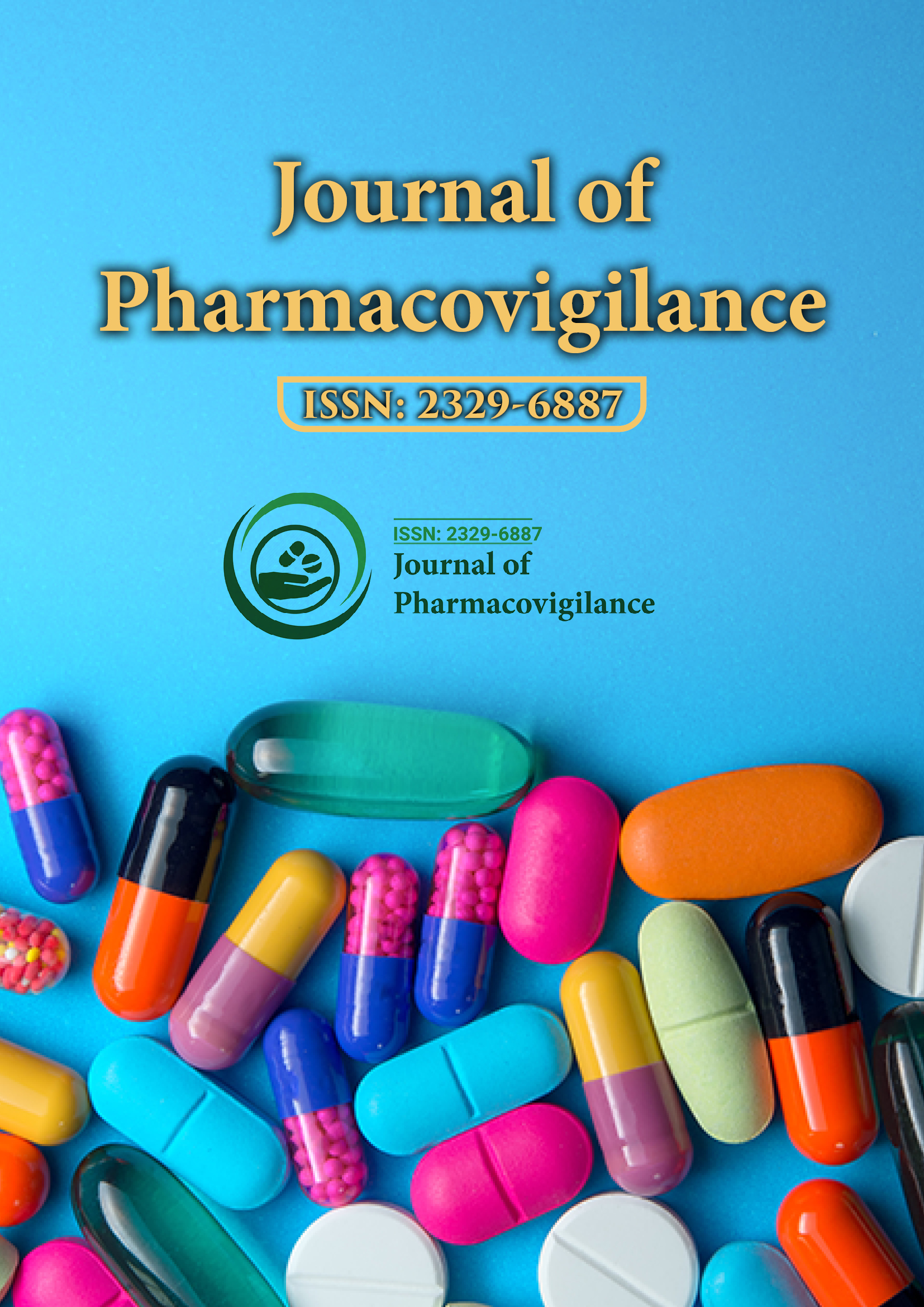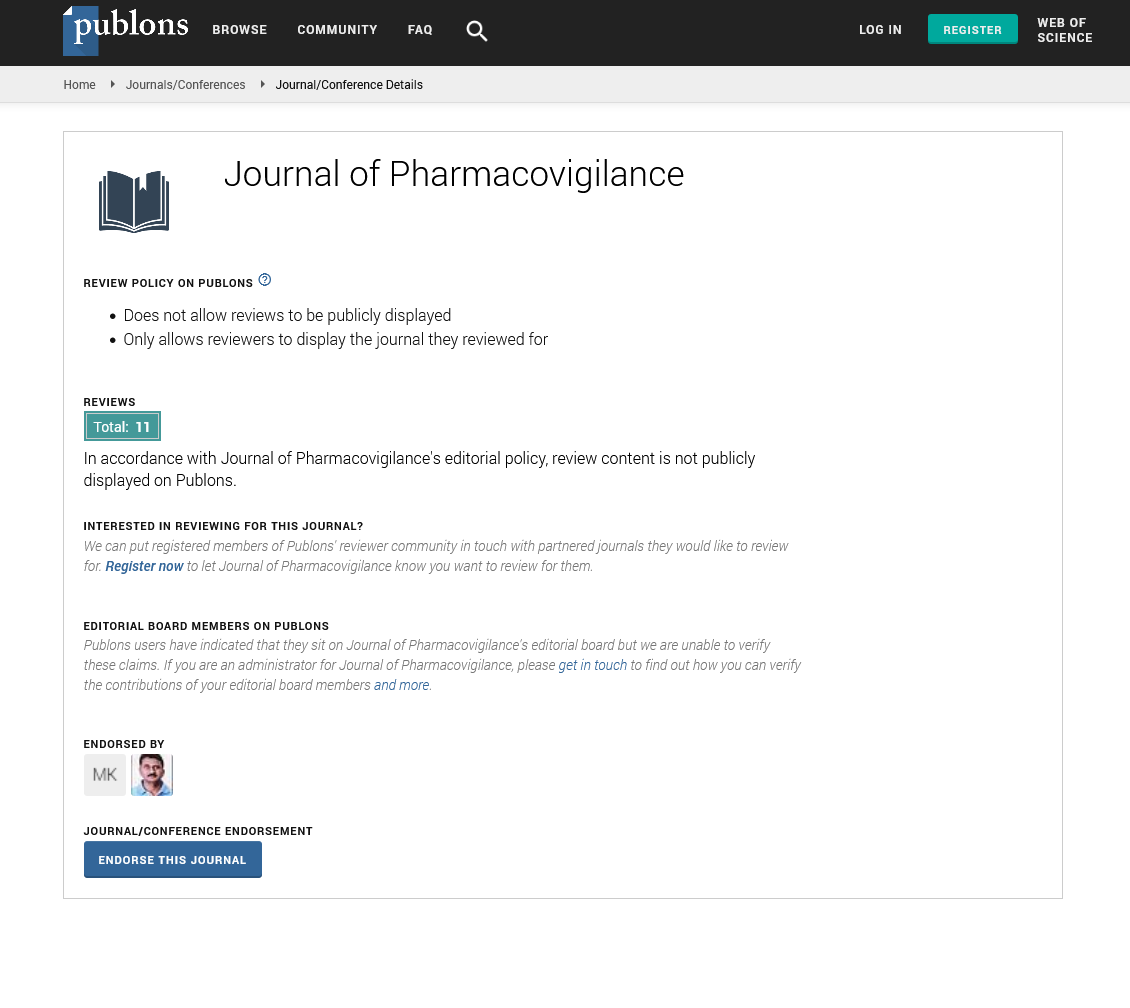Indexed In
- Open J Gate
- JournalTOCs
- The Global Impact Factor (GIF)
- RefSeek
- Hamdard University
- EBSCO A-Z
- OCLC- WorldCat
- Publons
- Euro Pub
- Google Scholar
Useful Links
Share This Page
Journal Flyer

Open Access Journals
- Agri and Aquaculture
- Biochemistry
- Bioinformatics & Systems Biology
- Business & Management
- Chemistry
- Clinical Sciences
- Engineering
- Food & Nutrition
- General Science
- Genetics & Molecular Biology
- Immunology & Microbiology
- Medical Sciences
- Neuroscience & Psychology
- Nursing & Health Care
- Pharmaceutical Sciences
Commentary - (2024) Volume 12, Issue 1
Ensuring Pharmacovigilance for Off-Label and Compounding Medications
Ling Zhao*Received: 29-Feb-2024, Manuscript No. JP-24-25629; Editor assigned: 01-Mar-2024, Pre QC No. JP-24-25629(PQ); Reviewed: 15-Mar-2024, QC No. JP-24-25629; Revised: 22-Mar-2024, Manuscript No. JP-24-25629(R); Published: 29-Mar-2024, DOI: 10.35248/2329-6887.24.12.472
About the Study
Pharmacovigilance, the science of monitoring the safety of medications after they reach the market, plays a critical role in safeguarding patient well-being. However, the landscape of pharmacovigilance becomes more complex when medications are used outside the scope of their approved indications (offlabel use) or when they are compounded for individual patient needs. This article delves into the importance of strong pharmacovigilance for off-label and compounded medications, highlighting the associated challenges and proposing strategies to bridge the knowledge gap regarding their safety profiles.
The prevalence and rationale of off-label use
Off-label use, where a medication is prescribed for a condition not listed on its approved label, is a surprisingly prevalent practice. Estimates suggest that off-label use accounts for 15%-20% of all prescriptions written in developed countries. This phenomenon can be attributed to several factors. First, the drug development process can be lengthy and expensive, leading to a gap between available medications and unmet medical needs. Off-label use may offer a valuable therapeutic option for patients with limited treatment alternatives. Additionally, emerging scientific evidence may support the efficacy of a medication for an off-label indication, even though formal regulatory approval for that use may lag behind.
Challenges in monitoring off-label safety
Despite the potential benefits of off-label use, it presents a significant challenge for pharmacovigilance. Regulatory bodies typically require comprehensive safety data for medications during the pre-marketing approval process. However, this data often pertains only to the approved indications. Limited data exists on the safety profile of these medications when used offlabel, particularly in specific patient populations or with different dosages. This knowledge gap can create uncertainty regarding potential risks associated with off-label use, hindering informed clinical decision-making.
The landscape of compounding medications
Compounding pharmacies offer a unique service by creating customized medications for individual patients. This personalization can be beneficial in several scenarios, such as when a commercially available medication is unavailable in the desired dosage form, strength, or flavor. Additionally, compounding can be crucial for pediatric patients or those with allergies to specific excipients in commercially available formulations.
Safety considerations in compounding
While compounding offers advantages, it introduces unique safety concerns compared to mass-produced medications. Unlike commercially available drugs, compounded products may lack the benefit of standardized manufacturing processes and rigorous quality control testing. This raises concerns about potential inconsistencies in potency, sterility, and stability of the compounded medication. Furthermore, the potential for interactions between different compounded ingredients adds another layer of complexity to the safety equation.
Strengthening pharmacovigilance: A multi-pronged approach
Streamlined reporting systems for Adverse Events (AEs) associated with off-label and compounded medications are crucial. These systems should be user-friendly and accessible to healthcare professionals, encouraging them to report potential safety concerns efficiently. Educational initiatives can also play a role in raising awareness about the importance of AE reporting for these medications.
Establishing registries specifically for off-label and compounded medications can provide valuable real-world data on their safety profiles. These registries can capture patient demographics, medication details (including the original medication, ingredients used in compounding, and dosage), and any AEs experienced. Analyzing data from such registries can help identify potential safety signals and guide further research efforts.
For compounded medications, encouraging stronger collaboration between manufacturers of the original ingredients and compounding pharmacies is essential. This collaboration can ensure the use of high-quality components that meet established pharmacopeial standards. Additionally, it can facilitate the sharing of knowledge and best practices regarding safe compounding techniques.
Promoting well-designed research studies on the safety and efficacy of off-label uses can provide valuable data to inform clinical practice. Such studies should employ rigorous methodologies and ethical considerations to ensure the strongness of their findings.
Empowering patients with information about off-label and compounded medications is critical. Patients should understand the potential benefits and limitations of these approaches, including any known safety risks associated with the specific offlabel use or compounded medication being considered. Open communication with healthcare providers regarding any concerns is crucial for informed decision-making.
Conclusion
Ensuring strong pharmacovigilance for off-label and compounded medications requires a collaborative effort from various stakeholders. By implementing the strategies outlined above, we can bridge the knowledge gap regarding the safety profiles of these medications. Continuous improvement in pharmacovigilance practices is essential to ensure that the potential benefits of off-label and compounded medications can be harnessed while minimizing risks for patients.
Citation: Zhao L (2024) Ensuring Pharmacovigilance for Off-Label and Compounding Medications. J Pharmacovigil. 12:472.
Copyright: © 2024 Zhao L. This is an open-access article distributed under the terms of the Creative Commons Attribution License, which permits unrestricted use, distribution, and reproduction in any medium, provided the original author and source are credited.

